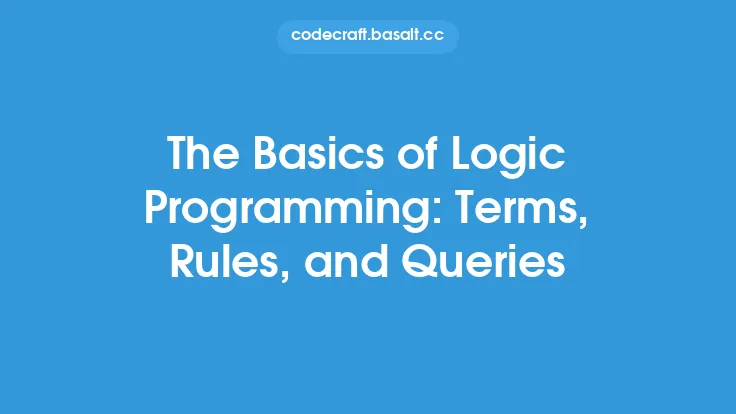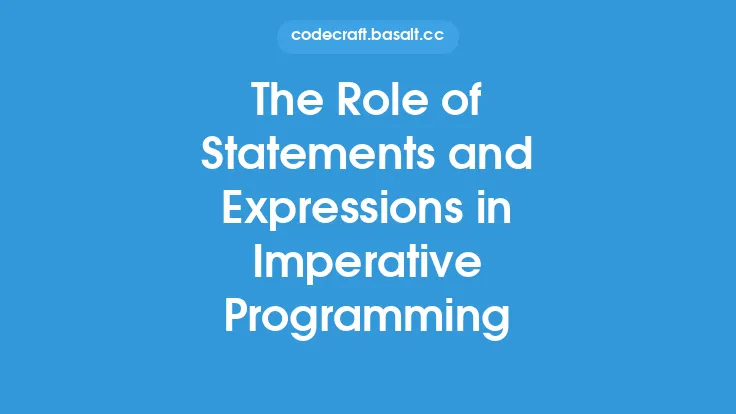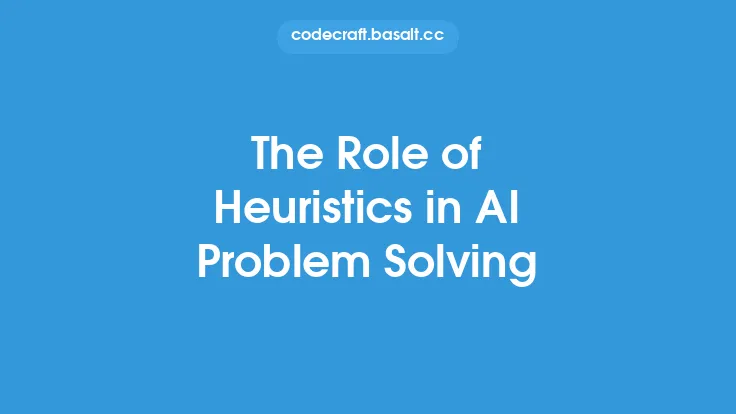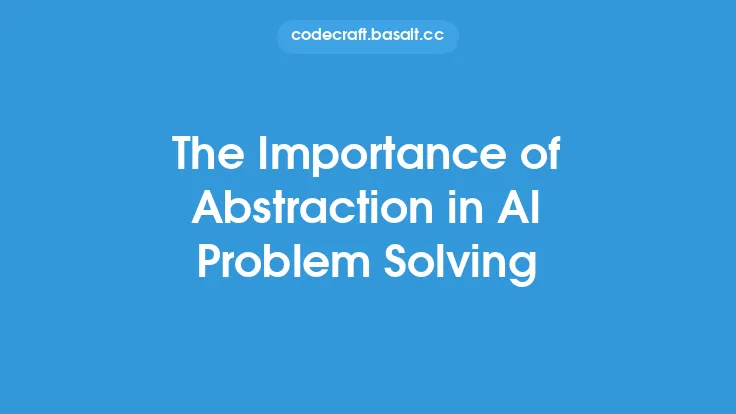Logic programming is a paradigm that relies heavily on the use of logical statements to represent knowledge and solve problems. At the heart of this paradigm lies the inference engine, a crucial component that enables the execution of logical programs. Inference engines play a vital role in solving complex problems by providing a mechanism to reason about the knowledge represented in the program. In this article, we will delve into the world of inference engines and explore their role in logic programming.
Introduction to Inference Engines
Inference engines are software components that automate the process of drawing conclusions from a set of premises. They are designed to reason about the knowledge represented in a logical program, using rules and facts to arrive at a conclusion. The inference engine is responsible for executing the logical program, using techniques such as forward chaining, backward chaining, or a combination of both. Forward chaining involves starting with the facts and applying the rules to derive new conclusions, whereas backward chaining involves starting with a goal and working backwards to find the supporting facts.
Architecture of an Inference Engine
The architecture of an inference engine typically consists of several components, including a knowledge base, a rule base, and a reasoning mechanism. The knowledge base stores the facts and data used by the inference engine, while the rule base stores the logical rules that govern the behavior of the system. The reasoning mechanism is responsible for applying the rules to the facts, using techniques such as resolution, unification, or constraint satisfaction. The inference engine may also include additional components, such as a working memory, which stores the current state of the system, and a control mechanism, which manages the execution of the reasoning process.
Types of Inference Engines
There are several types of inference engines, each with its own strengths and weaknesses. Some of the most common types include:
- Forward Chaining Engines: These engines start with the facts and apply the rules to derive new conclusions. They are useful for applications where the goal is to generate all possible conclusions from a set of facts.
- Backward Chaining Engines: These engines start with a goal and work backwards to find the supporting facts. They are useful for applications where the goal is to determine whether a specific conclusion can be derived from a set of facts.
- Hybrid Engines: These engines combine forward and backward chaining techniques to provide a more flexible and efficient reasoning mechanism.
- Constraint-Based Engines: These engines use constraint satisfaction techniques to reason about the knowledge represented in the program. They are useful for applications where the goal is to find a solution that satisfies a set of constraints.
Inference Engine Algorithms
Inference engines use a variety of algorithms to reason about the knowledge represented in the program. Some of the most common algorithms include:
- Resolution: This algorithm is used to derive new conclusions from a set of premises. It involves applying a set of rules to the premises, using techniques such as unification and substitution.
- Unification: This algorithm is used to match a set of terms with a set of patterns. It involves finding a substitution that makes the terms and patterns identical.
- Constraint Satisfaction: This algorithm is used to find a solution that satisfies a set of constraints. It involves using techniques such as constraint propagation and search to find a solution that satisfies all the constraints.
Applications of Inference Engines
Inference engines have a wide range of applications, including:
- Expert Systems: Inference engines are used to build expert systems, which are computer programs that mimic the behavior of a human expert in a particular domain.
- Artificial Intelligence: Inference engines are used in artificial intelligence applications, such as natural language processing, computer vision, and robotics.
- Database Systems: Inference engines are used in database systems to provide a more flexible and efficient query mechanism.
- Decision Support Systems: Inference engines are used in decision support systems to provide a more informed and rational decision-making process.
Challenges and Limitations
Inference engines face several challenges and limitations, including:
- Scalability: Inference engines can be computationally expensive, making it difficult to scale them up to large and complex problems.
- Complexity: Inference engines can be complex and difficult to understand, making it challenging to develop and maintain them.
- Uncertainty: Inference engines can struggle with uncertainty and ambiguity, making it difficult to arrive at a definitive conclusion.
- Explanation: Inference engines can struggle to provide a clear and concise explanation of their reasoning process, making it difficult to understand and trust their conclusions.
Future Directions
Inference engines are a rapidly evolving field, with several future directions and trends emerging. Some of the most promising areas of research include:
- Hybrid Approaches: Hybrid approaches that combine different inference engine techniques, such as forward and backward chaining, or constraint satisfaction and resolution.
- Distributed Inference: Distributed inference engines that can operate in a distributed environment, using techniques such as parallel processing and cloud computing.
- Explainable Inference: Explainable inference engines that can provide a clear and concise explanation of their reasoning process, using techniques such as model-based reasoning and transparency.
- Uncertainty Management: Uncertainty management techniques that can handle uncertainty and ambiguity, using techniques such as probability theory and fuzzy logic.





